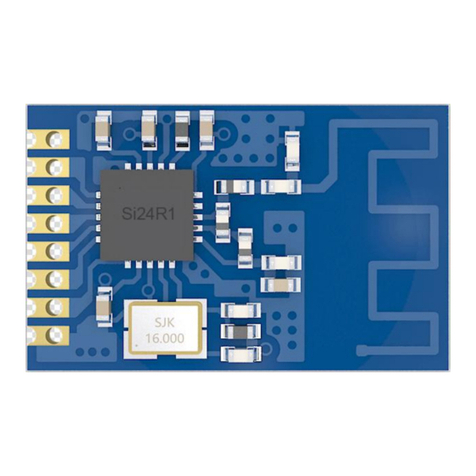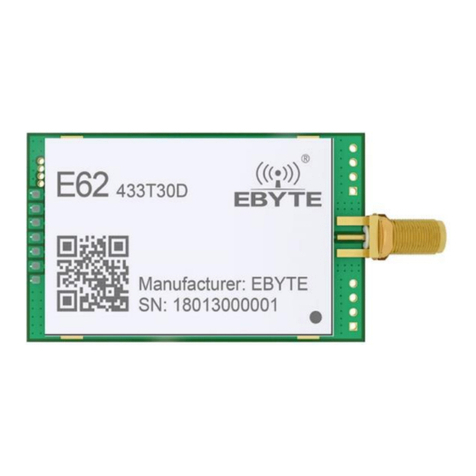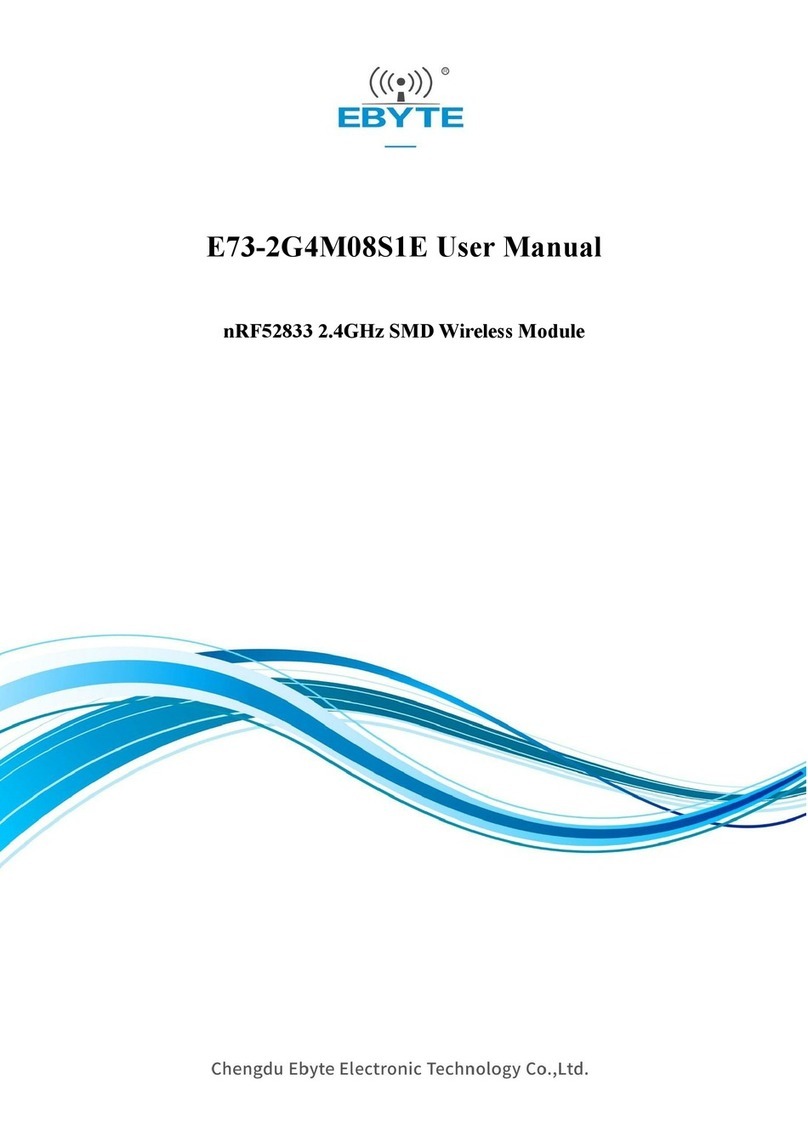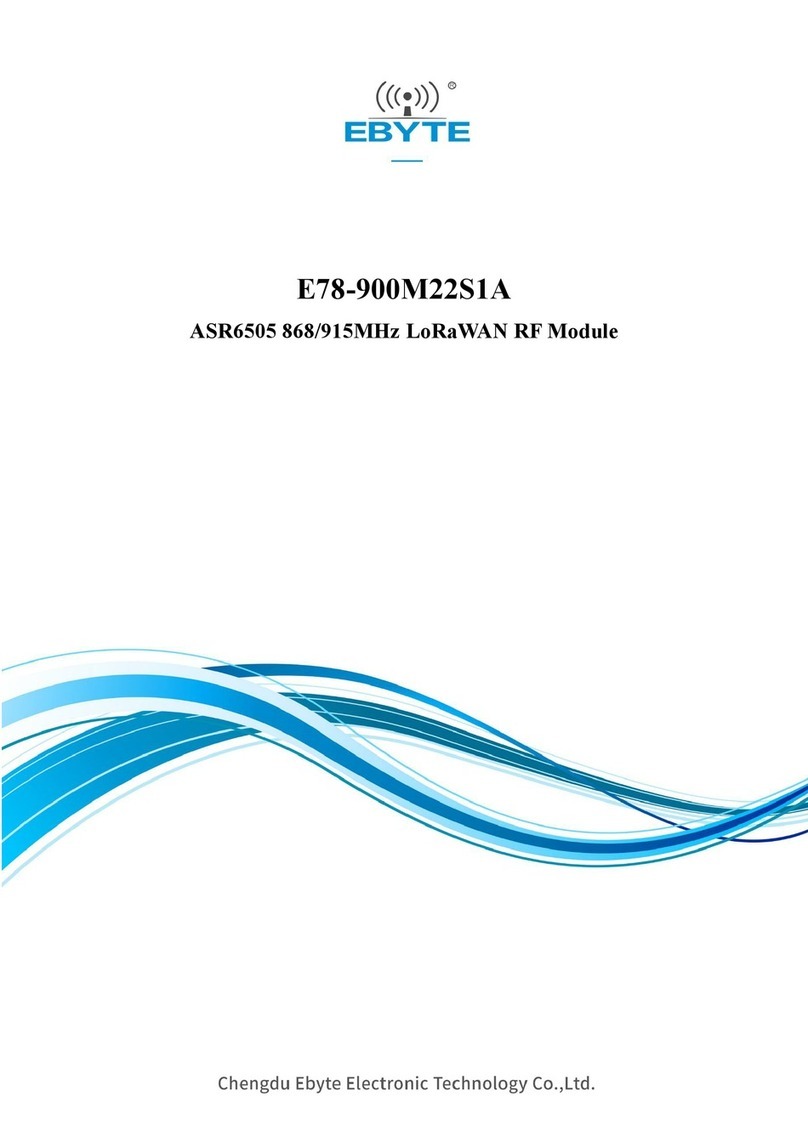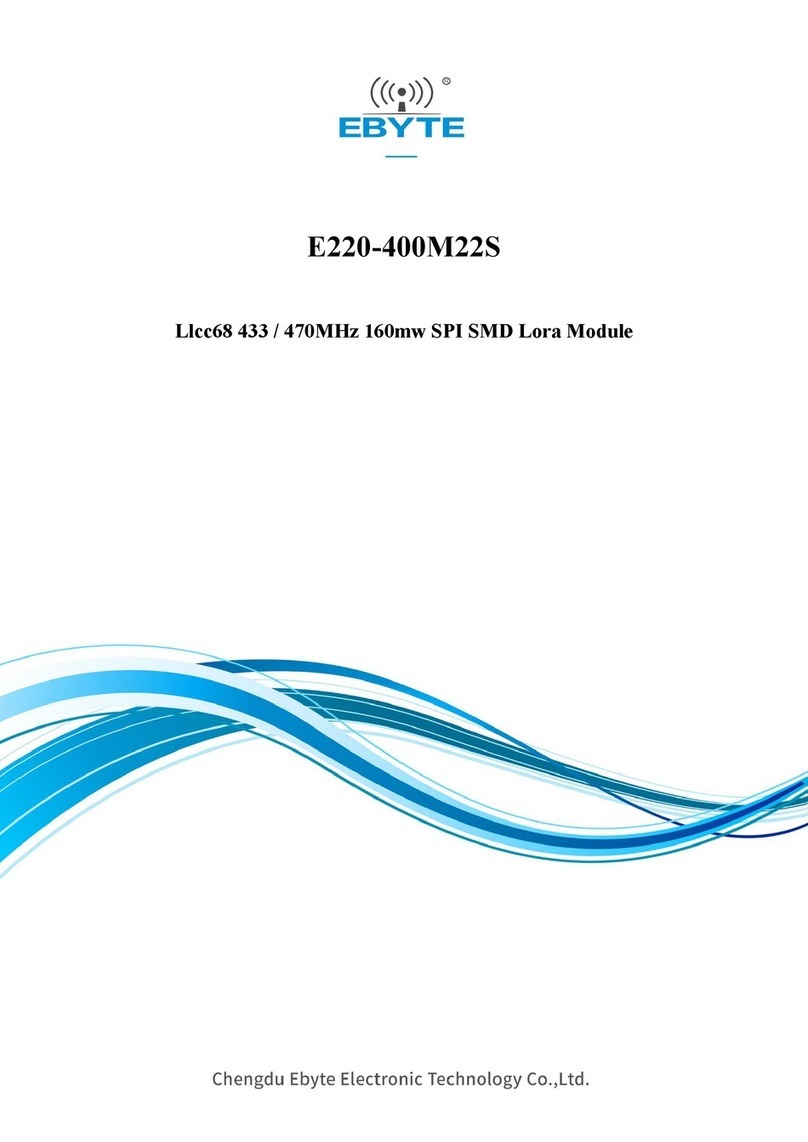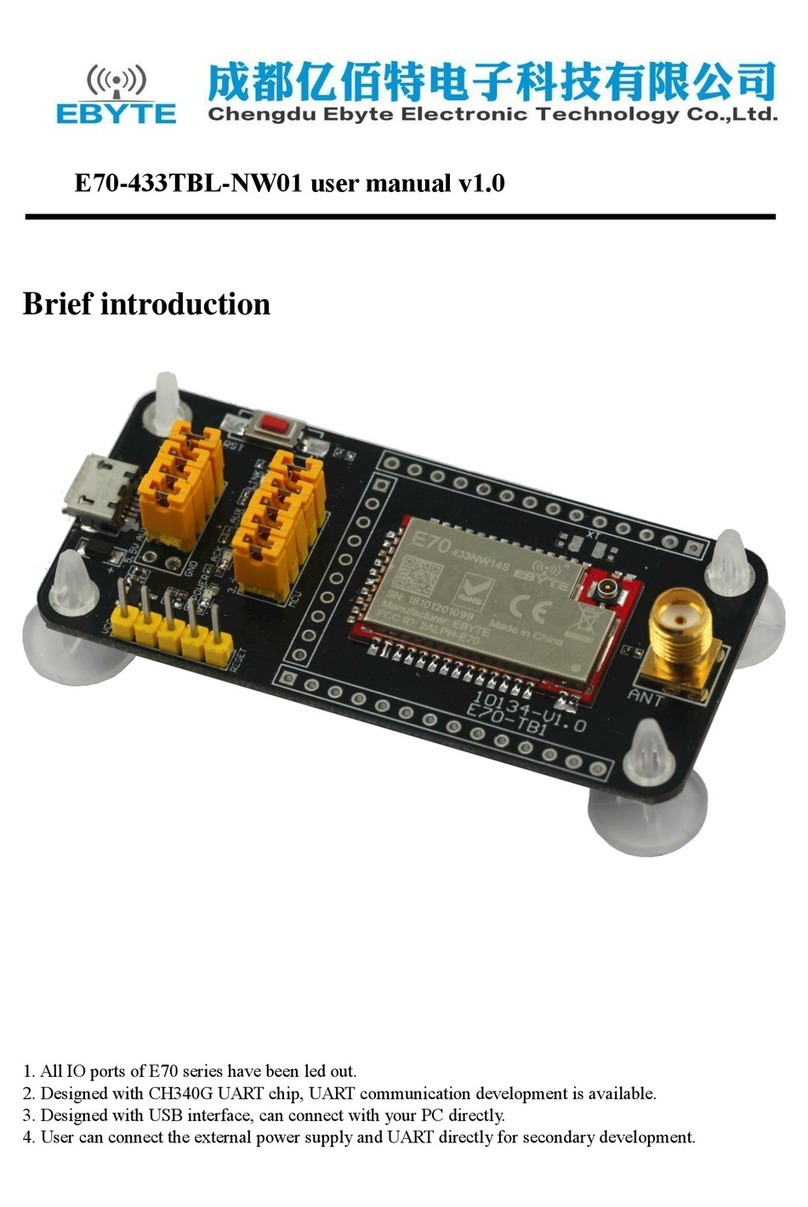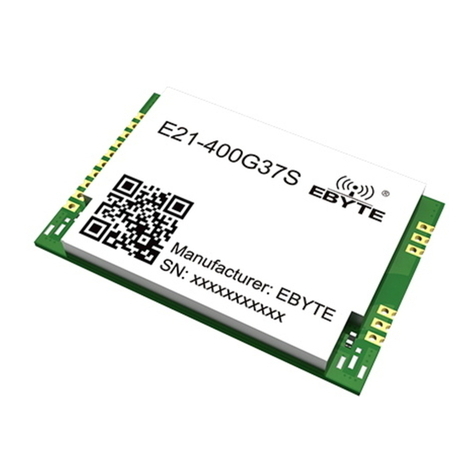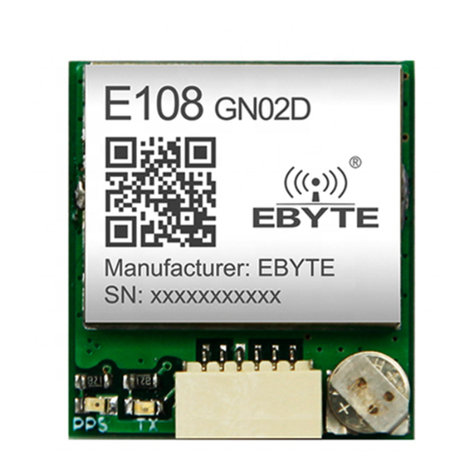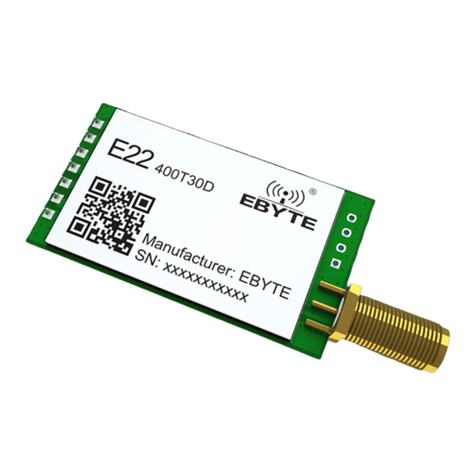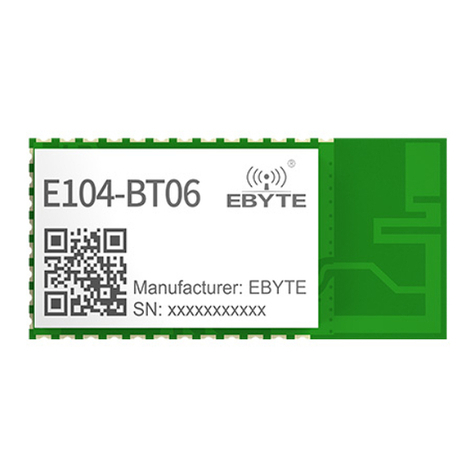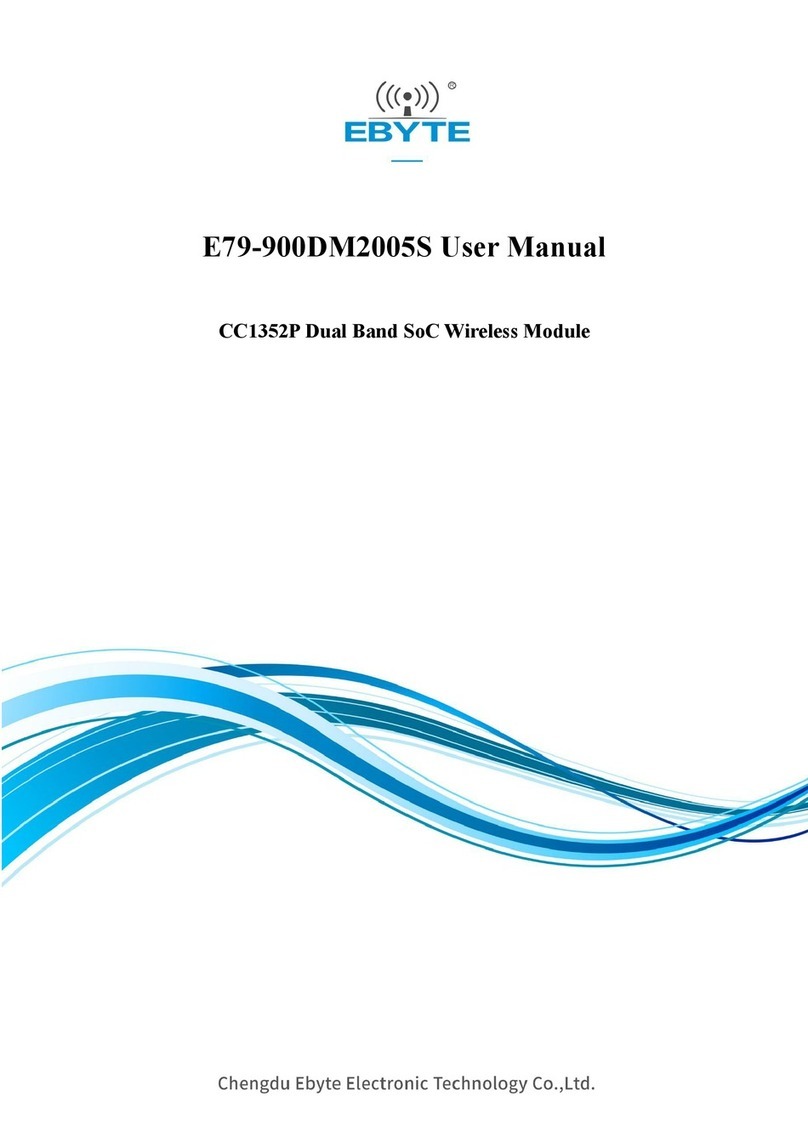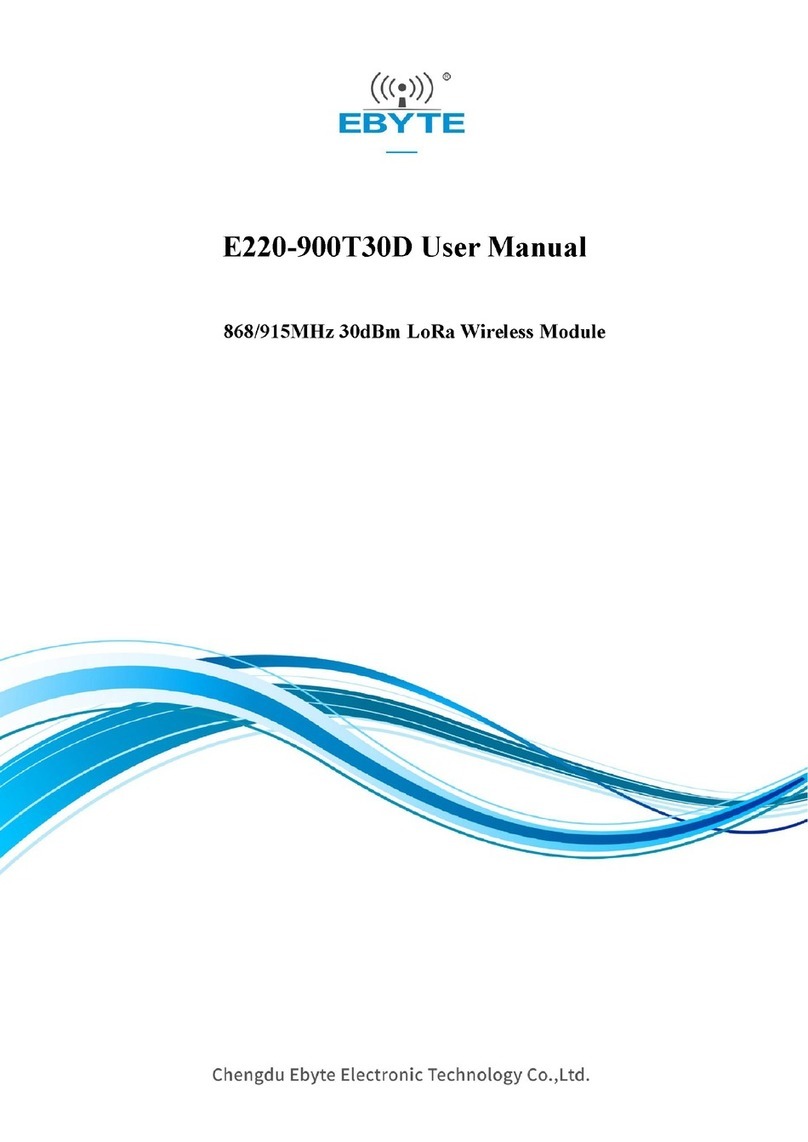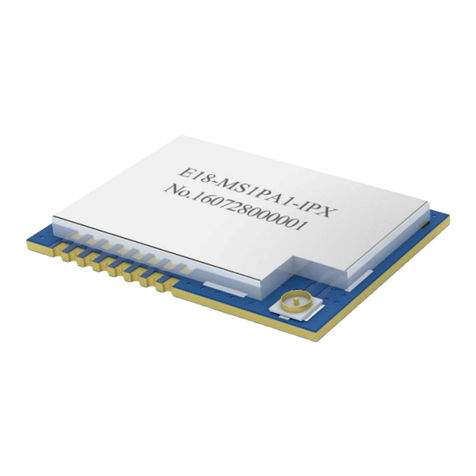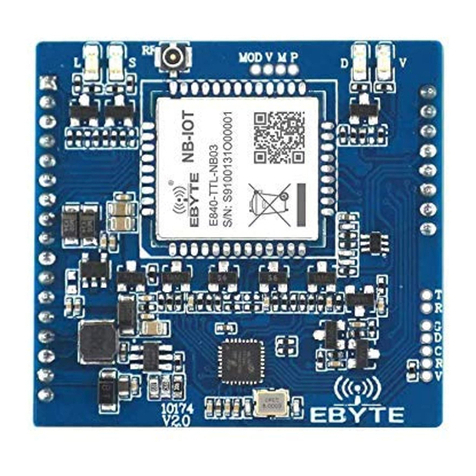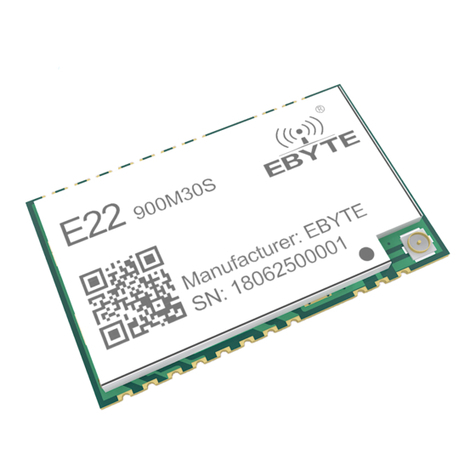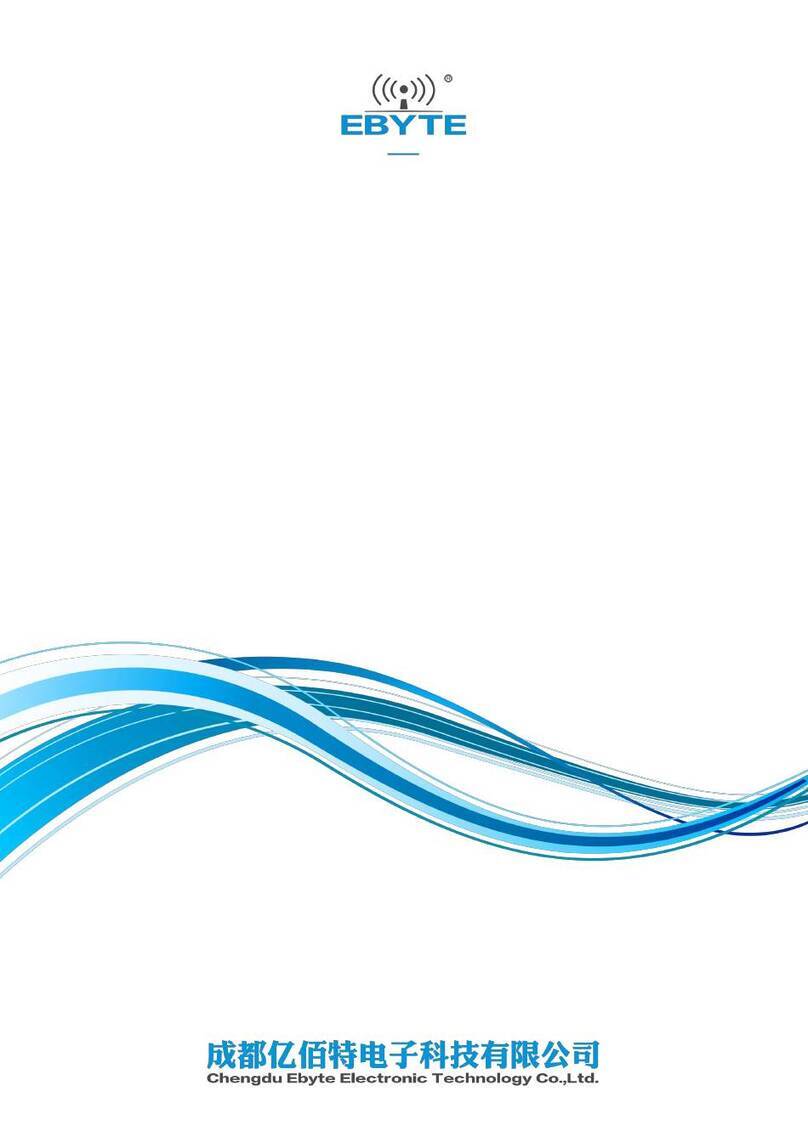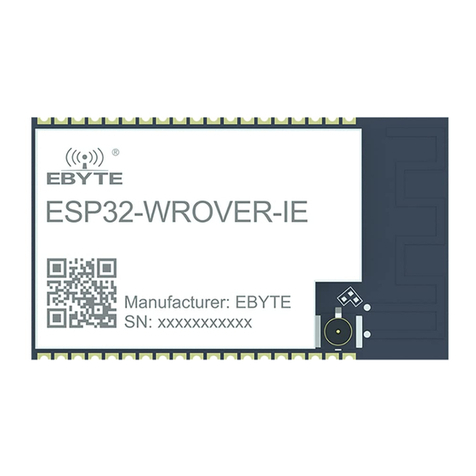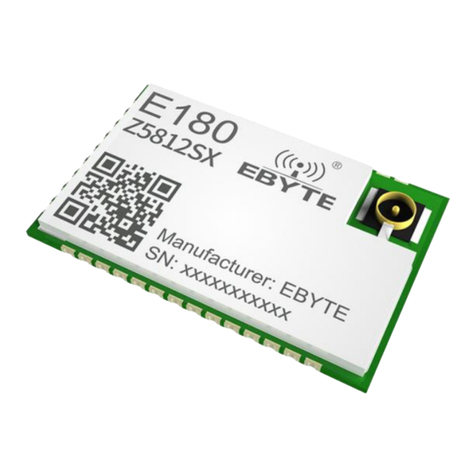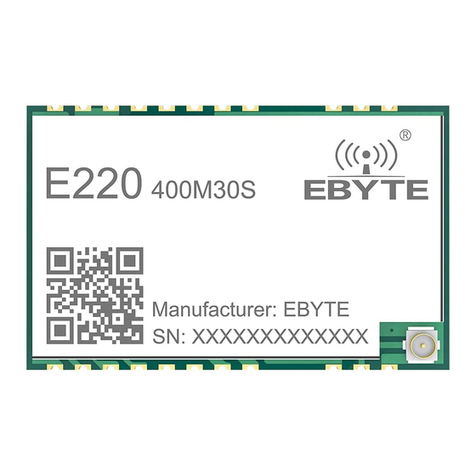
Chengdu Ebyte Electronic Technology Co., Ltd. E01-2G4M13S User Manual
Copyright ©2012–2018,Chengdu Ebyte Electronic Technology Co.,Ltd
Power supply :2.0~ 3.6V DC
SPI master output slave input
SPI master input slave output
Interrupt request, valid in low communication level
4 Basic operation
It is recommended to use a DC stabilized power supply. The power supply ripple factor is as small as possible,
and the module needs to be reliably grounded.;
Please pay attention to the correct connection of the positive and negative poles of the power supply.
Reverse connection may cause permanent damage to the module;
Please check the power supply to ensure it is within the recommended voltage otherwise when it exceeds the
maximum value the module will be permanently damaged;
Please check the stability of the power supply, the voltage can not be fluctuated frequently;
When designing the power supply circuit for the module, it is often recommended to reserve more than 30%
of the margin, so the whole machine is beneficial for long-term stable operation.;
The module should be as far away as possible from the power supply, transformers, high-frequency wiring
and other parts with large electromagnetic interference.;
High-frequency digital routing, high-frequency analog routing, and power routing must be avoided under
the module. If it is necessary to pass through the module, assume that the module is soldered to the Top
Layer, and the copper is spread on the Top Layer of the module contact part(well grounded), it must be close
to the digital part of the module and routed in the Bottom Layer;
Assuming the module is soldered or placed over the Top Layer, it is wrong to randomly route over the
Bottom Layer or other layers, which will affect the module's spurs and receiving sensitivity to varying
degrees;
It is assumed that there are devices with large electromagnetic interference around the module that will
greatly affect the performance. It is recommended to keep them away from the module according to the
strength of the interference. If necessary, appropriate isolation and shielding can be done;
